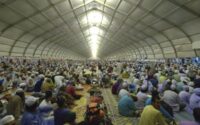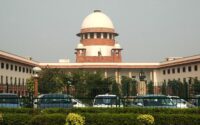Pre-Trial Prejudice: Time To Identify The Evil In India?
This article is written by Pratha Waghmare, from University of Mumbai Law academy, Maharashtra and curated by Rajrishi Ramaswamy from Symbiosis Law School, Hyderabad.
The phrase ‘Constitutional morality’ was introduced in Constitutional Assembly on November 4, 1998 during discussion on administration under the draft Constitution.
Babasaheb Ambedkar introduced the phrase and called it an unnatural sentiment, something to be cultivated in Indian society,which he called “essentially undemocratic”. Babasaheb drew a line of conflict between constitutional and social morality and it still exists. Undemocratic nature of society is often reflected in judicial mechanism and takes its worst form in the field of criminal law. Theoretically, right to fair trial is considered to be one of the fundamental principles of criminal justice system. In practice however, this justice often becomes the victim of social realities, which derive from prevailing moral standards and are reflected in various elements of criminal trial.
A criminal case consists of both trial and the pre-trial phase. Although from an integral point of view, they constitute a cohesive unit, the consequent effect of irregularities committed during preliminary phase also falls on the impartiality of the process. Strictly speaking, a trial takes place within a courtroom. However, what is ultimately organized within the court is, directly or indirectly, controlled by events outside the court. Witnessing, obtaining attendance, personal cross-examination of defendants under Section 313 Cr.PC, impartiality of prosecutors, police discipline during investigations, proper production of evidence, media reporting, etc. These are some aspects of a criminal trial that are controlled by preliminary events outside the courtroom. Pre-trial events that can cause bias cannot be treated casually. It is necessary to examine its probable impact on the fairness of a process. So far we have avoided any such examination.
The expression “pre-trial injury” is borrowed. Taken from Rideau v. Louisiana, this expression is used largely to refer to jury bias in criminal trials. Jury system involves few community members in condemning the accused’s guilt or innocence and since these members come from the community unlike Judges, they have certain social biases. When such social biases adulterate their ability to make decisions, it becomes a case of pre-trial bias. The inclusion of the phrase “before trial” before the word “prejudice” indicates that this prejudice stems from their social and community experiences before they were called to take part in the criminal trial. Under Indian Jury Act, 1826, the jury system was introduced in India and continued (possibly) until the 1973 Code was enacted. The country witnessed a vivid display of jury bias during the famous Nanavati Trial, in which the jury recommended 8-1 acquittal. Session Judge Mehta, in presenting the case for review to the Superior Court, had commented on the famous phrase: “I feel as though our entire law has been tried.”
However, it turned out that jury system was not the only cause of preliminary bias. It was one of many possible causes, and although we abolished jury system, other causes continued to reign. Today, India’s criminal justice system faces the threat of news-related bias. Illustratively, there is no law in India to protect the identity of the accused. Since the crime-report phase, a wave of news in media runs parallel to investigative phases. Subsequent speech outside the courtroom soon begins to negatively affect interior processes.
To understand this phenomenon, it is necessary to understand elements that come together to build a criminal trial. To come to a decision, a judge must be assisted by professional lawyers, fair prosecutors, innocent witnesses, and disciplined investigative officers. The professionalism of a bailiff would be of little value if he does not receive adequate assistance in the process. Search for justice is a collective task.
For instance, a defendant accused of sedition for giving a speech that circulates, misrepresents and speaks widely on the Internet is more likely to end up with an indictment sheet than a closing report. A defendant arrested on a widely reported blatant rape charge is more likely to be subjected to prison violence after arrest, not only by police but also other inmates.
The meeting in Hyderabad of 4 “suspects” of group rape was a textbook example of how extreme pre-trial bias could result from excessive public speaking. The 4 suspects, with their photos, names and details of relatives revealed, are biased for life. Did the police wait for identification before publishing information? No. The police felt the need to satisfy society with immediate action.
Also, what are the chances that a physician, himself outraged by a widely reported rape, wrongly reports injuries sustained by prison violence on an accused’s body, arrested in connection with that crime?
Consider another instance. A witness living in a regressive community is less likely to fearlessly testify in court against an honor killing if it has been a subject of heated discussion in his community. We live in a society where lawyers’ associations adopt resolutions to prevent lawyers from defending defendants for popular crimes. These Bar Associations unify with local sentiments. Would it therefore be an exaggeration to say that such defendants are less likely to be defended by a lawyer of their choice in court? The emphasis comes from Article 22, a fundamental right guaranteed to all by the Constitution.
Above-discussed illustrations would reveal that there is no uniform-distortion-phenomenon. However, there is some plausible explanation. When heinous crimes in a largely uninformed society are dealt with extraordinary media coverage without protecting the identity of the accused, the whole community begins to share the trauma of the victims and begins to believe that nothing less than the toughest punishment would be acceptable. What acts as the final nail in the coffin of justice is absence of basic legal knowledge, especially presumption of innocence, both by media and the masses. The impact is unimaginable and unexplored. I feel obligated to borrow the words of Judge Matsch, who in United States v. Mc Veigh said that “the whole state had become a unified community, sharing the emotional trauma of those who had been direct victims”.
What collapses under this collective desire to punish is the impartiality and free will of those who play a role in different stages: police, witnesses, doctors, experts, lawyers, prosecutors, etc. They feel the need to exceed society’s expectations with great success and end up being weak links in a trial. Local sentiment prevails over Constitutional sentiment. It is understandable that causes evolve continuously. Indeed, it is precisely this complexity of causes that has allowed these flagrant irregularities to escape the clutches of law.
Preliminary bias is not directed only against the accused. The victims also face music occasionally. Let’s venture into monotony of Bollywood and recall the story of a poor girl from the village, gang-raped by some rich men of the community. The incident is followed by the abduction of witnesses, suppression of evidence and denial of legal aid. Local media report it as a suicide and create enough sentiment for witnesses and police to follow the “correct” line. The question here is if trial courts open to such victims on the same terms as others. An even bigger question is whether our courts equipped enough to remedy this pre-trial fiasco.
It was noted in Sheppard v. Maxwell (1966) that courts must vigorously enforce measures ensuring non-assessment of balance against accuse in modern conditions. I propose to replace the word “jury” with other members of a trial (police, witnesses, media, etc.) and ask for courts of first instance to effectively control what precedes the trial phase to ensure the trial is not fraudulent in nature.
The remedy against most of evil scenarios outlined above is found in Indian High Courts whether through lawsuits under Constitution or appeals under CrPC. While the former is largely inaccessible to most, the latter reaches such an advanced stage that recovering what was lost prior to the process becomes impossible. Criminal proceedings and evidentiary law in India do not have preventive tools against these prejudices. They provide for corrective measures and place a heavy burden on accused to demonstrate “lack of justice” before seeking remedy.
Other challenges arise when we understand our jurisprudential approach to the concept of “prejudice”. For example, in Mohd. Hussain v. State (NCT Government) Delhi, the Court observed such prejudice cannot be interpreted generically.
It is time to recognize possibility of bias even beyond traditional stages of investigation or trial. Limited meaning of “investigation”, as adopted, has the effect of ruling out a myriad of circumstances that could potentially prejudice cases. and courts of first instance should be empowered for independent examination of pre-trial-bias issues, regardless of causes, and procedural irregularities. For solid foundation of trials, a court must be able to effectively counter such out-of-court bias. When left to appeal forums, confidence on criminal justice system and spontaneity is lost. It is also time for provisions similar to section 228A of the IPC. A defendant has the right to “confidentiality of information” and a fair trial under Article 21, although it requires certain restrictions in the Competitive Press Act. Ever-changing causes of bias must be trapped before Law itself becomes subject of judgment.


